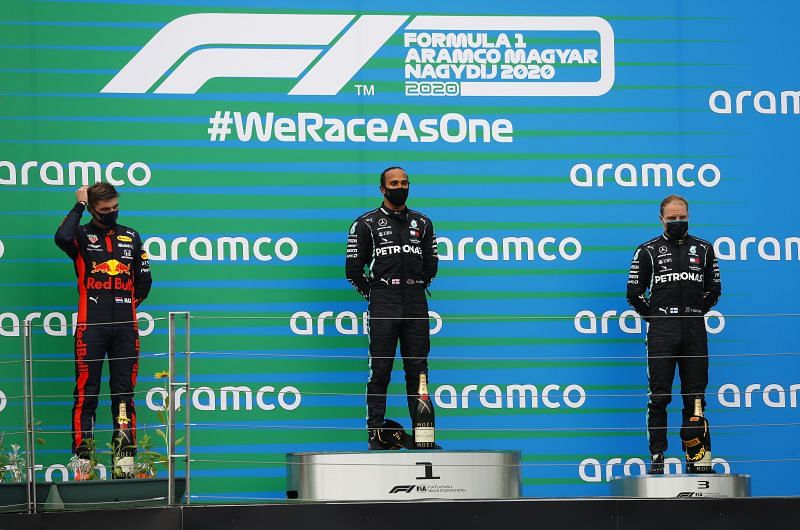
Mercedes’ current dominance in Formula 1 began in 2014, the year that marked a dramatic change in the engine regulations. Sebastian Vettel and Red Bull Racing, who won four titles in a row between 2010 and 13 and nine wins in a trot in 2013 alone, would have to give way to the new contenders.
Mercedes was the favorite in the pre-season and appeared to be the only team that cracked the new engine regulations. With an aerodynamically efficient package to complement an engine that was the class of the field, the Silver Arrows won their first race of the season in Australia comfortably with Nico Rosberg at the wheel.
The team has not looked back since then and has won every driver and constructor title to date and has put together the most dominant run of a single team in Formula 1 history.
A by-product of their dominance led to one of the greatest single careers in Formula 1 when Lewis Hamilton rewrote the record book.
The question, however, is how Mercedes, despite entering the sport in 2010, managed to conquer the world of Formula 1 so convincingly by 2014.
In this article, we’ll talk about some of the key factors behind Mercedes’ dominance and why giants like Red Bull, Ferrari and McLaren couldn’t pose a huge challenge.
# 1 Mercedes has one of the best drivers on the grid
Lewis Hamilton will drive for MERCEDES AMG PETRONAS from 2013 @lewishamilton bit.ly/QiyoiwLewis Hamilton will drive for MERCEDES AMG PETRONAS @lewishamilton bit.ly/Qiyoiw from 2013
By 2012, Mercedes had started taking steps towards the top of the grid. Nico Rosberg won the Chinese Grand Prix, while Michael Schumacher brought the Mercedes to pole position in Monaco. Clear progress could be seen within the team.
What was missing, however, was a driver who could bring the team forward, even in a championship battle in which he might not have the fastest car, but could still make a difference.
With Michael Schumacher, Mercedes had a driver who was about to retire. Nico Rosberg was a strong and constant contributor, but at first glance not a potential world champion.
In the 2012 Formula 1 field, three drivers stood out who were needed to fight for the title: Sebastian Vettel, Lewis Hamilton and Fernando Alonso.
Sebastian Vettel, for his part, was the reigning world champion at Red Bull and it would be difficult to poach him from the team that had the best cars on the grid at the time.
Fernando Alonso was heavily involved in the battle for the championship with Ferrari and came excruciatingly close in 2010 and 2012.
Lewis Hamilton was with McLaren for the final year of his contract. Reliability problems and constant breakdowns in the pits meant that the British superstar was just an underdog in the championship.
As a result, Hamilton was not happy and Mercedes was able to secure his services with the help of Niki Lauda. The Brit’s brilliance has been seen in several races since then, such as the 2020 Turkey GP, where Hamilton dragged a pathetically slow car to an unlikely victory.
# 2 The regulations have remained relatively stable in the turbo hybrid era
The regulations have remained relatively stable in the turbo era. Photo: Mark Thompson / Getty Images
In most cases, Formula 1 has seen a change in the regulations as the main catalyst for a change of guard. Ferrari’s dominance finally ended in 2006 when only a single set of tires was required for the entire duration of the Grand Prix. Then, in 2009, a major aerodynamic overhaul was one of the main reasons the upstart Brawn Racing took the title with their innovative blown diffuser.
The 2014 engine regulations also changed the pecking order and gave Mercedes an exceptional lead in the field. This year, Mercedes was around one second faster per lap than its closest competitors on most of the circuits. They gained this advantage not only through the engine, but also through an aerodynamic package that is superior to the rest of the field.
With limited development opportunities during the season, it was always impossible for the rivals to catch up such a massive deficit.
While there have been minor changes to the regulations since 2014, such as the wider cars and tires, the core formula has largely remained the same. This relative stability of the regulations also helped Mercedes maintain its lead over the rest of the field.
also read
Edited by Sandeep Banerjee
Sign in to reply
![]()






